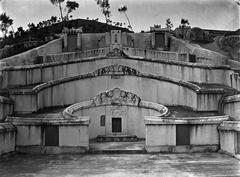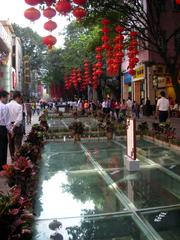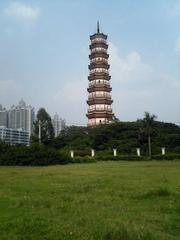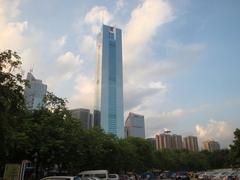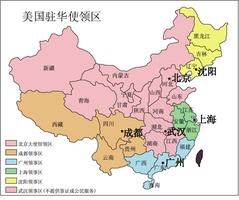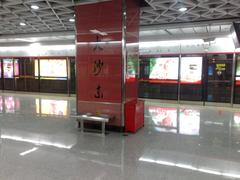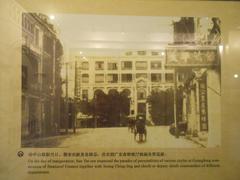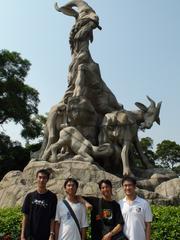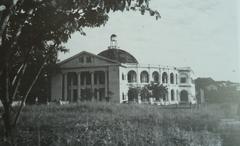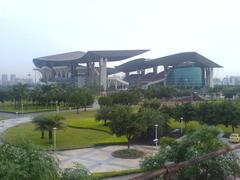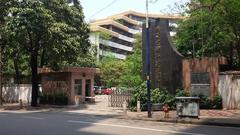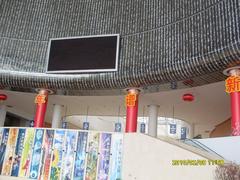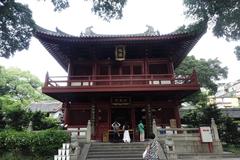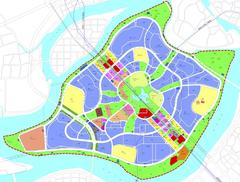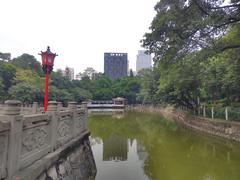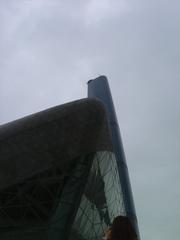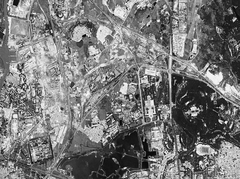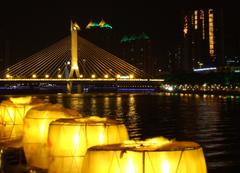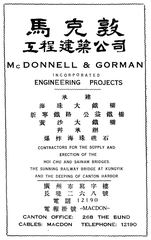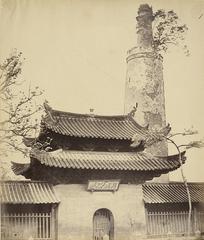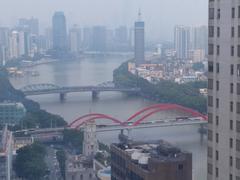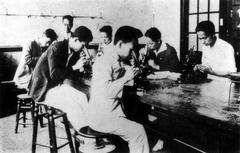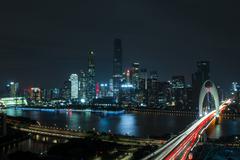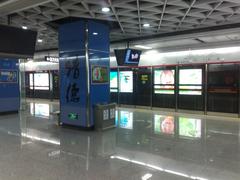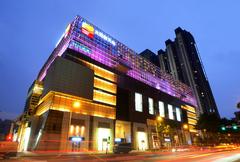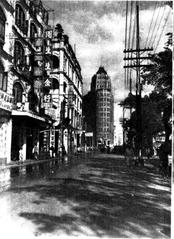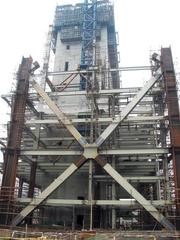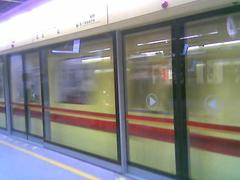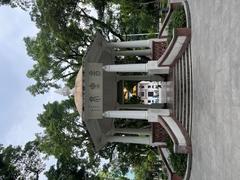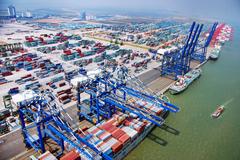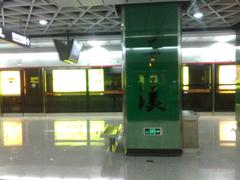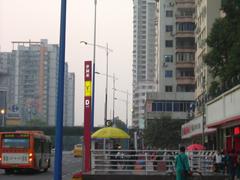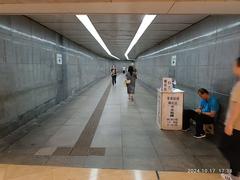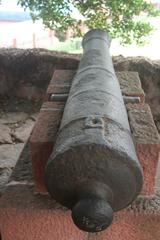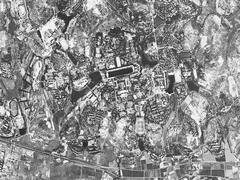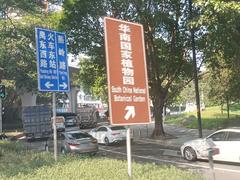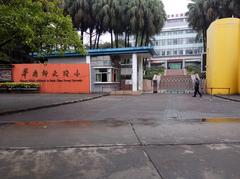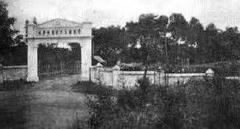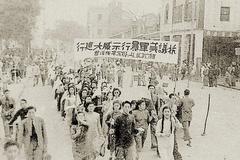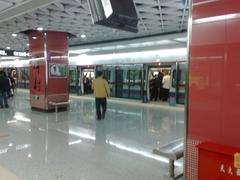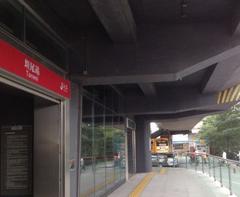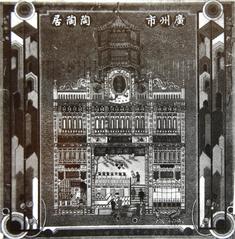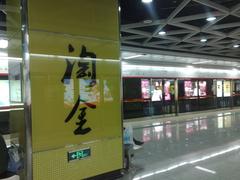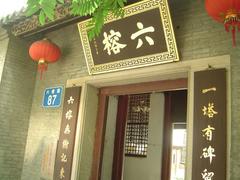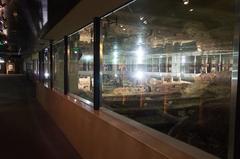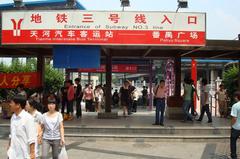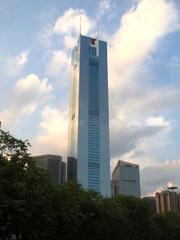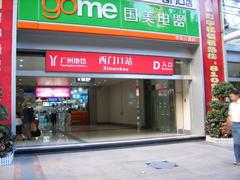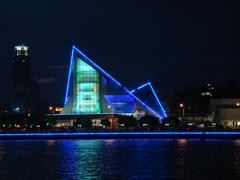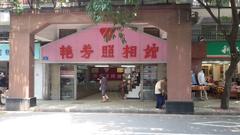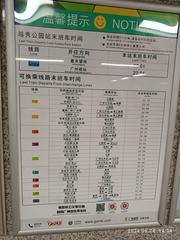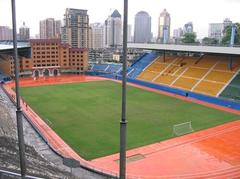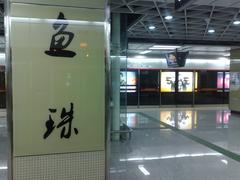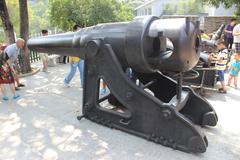Xinguang Bridge Visiting Hours, Tickets, and Travel Guide – Guangzhou Historical Sites
Date: 14/06/2025
Introduction
Xinguang Bridge, a striking feat of modern engineering, elegantly spans the Pearl River in Guangzhou, China. Opened in 2007, it not only facilitates a vital connection between the Haizhu and Panyu districts but also stands as a symbol of Guangzhou’s rapid urban transformation and cultural vitality. Its innovative design, impressive scale, and role in the city’s infrastructure make it both a practical transit route and a scenic destination for visitors and locals. Whether you’re an architecture enthusiast, a photographer, or a traveler exploring Guangzhou’s multifaceted urban landscape, Xinguang Bridge offers panoramic views, easy access, and a glimpse into the city’s dynamic progress (Atlantis Press; megaconstrucciones.net).
This guide covers everything you need to know: the bridge’s history and engineering highlights, practical visiting information, tips for experiencing the best views, and recommendations for nearby attractions.
Table of Contents
- Introduction
- Historical Context and Significance
- Architectural and Engineering Highlights
- National and International Impact
- Symbolism and Urban Identity
- Visiting Xinguang Bridge: Practical Information
- Visitor Experience and Practical Tips
- Cultural and Urban Insights
- Weather, Accessibility, and Emergency Info
- Frequently Asked Questions (FAQ)
- Conclusion and Recommendations
- Sources and Further Reading
Historical Context and Significance
Urban Development and the Need for Connectivity
Guangzhou’s position as a leading commercial and cultural hub has fueled urban expansion and population growth, intensifying the need for efficient cross-river transportation. The Pearl River, both a lifeline and a barrier, prompted the construction of new bridges to unite emerging districts and sustain the city’s momentum. Xinguang Bridge was conceived to address this need, supporting Guangzhou’s evolution as a global city (TravelChinaGuide).
Planning and Construction Milestones
The bridge’s planning phase began in the early 2000s, spearheaded by China Railway Engineering Consultants Group Co., Ltd. Construction commenced in the mid-2000s, and the bridge opened to traffic in January 2007. Its completion involved collaboration among leading engineers, construction teams, and academic institutions, reflecting national aspirations for innovation and excellence (Atlantis Press).
Architectural and Engineering Highlights
Structural Design and Typology
Xinguang Bridge is a three-span continuous half-through rigid-frame steel truss arch bridge. Its main span stretches 428 meters, with total length exceeding 1,080 meters, placing it among the longest steel arch bridges worldwide (megaconstrucciones.net). The bridge features two reinforced concrete V-shaped rigid frames, which not only enhance structural stability but also contribute to its distinctive silhouette.
Key Engineering Features
- Main Span and Arch Structure: The steel truss arch, made from high-strength steel, supports six traffic lanes and two sidewalks, ensuring both robustness and flexibility. The arch rises 104 meters, achieving a rise-to-span ratio of 1:4, while vertical suspenders distribute the deck load and horizontal ties counteract thrust (Atlantis Press; ENR).
- Deck and Foundation: The orthotropic steel plate deck enables a smooth flow of traffic and withstands heavy loads. Deep pile foundations anchor the bridge, designed to endure dynamic environmental pressures such as river currents and seismic activity (Atlantis Press).
- Dynamic Performance: Advanced modeling and field testing confirm the bridge’s stability under traffic, wind, and seismic forces (Scientific.net).
Innovations and Distinctive Features
The integration of reinforced concrete with steel truss elements results in a structure that is both resilient and visually striking. Specialized anti-corrosion and protective treatments ensure durability in Guangzhou’s humid, subtropical climate (Atlantis Press).
National and International Impact
Upon opening, Xinguang Bridge ranked as the sixth-longest arch span globally and the third-longest in China, only surpassed by Chaotianmen and Lupu bridges. Its innovative hybrid design has influenced bridge engineering practices worldwide (Atlantis Press).
Symbolism and Urban Identity
Often referred to as the “flying rainbow,” Xinguang Bridge’s sweeping arch and vibrant illumination have become a visual emblem for Guangzhou’s modernization and openness. Its design harmonizes with the city’s “City of Flowers” identity and enhances the urban skyline, especially when viewed at night (TravelChinaGuide).
Visiting Xinguang Bridge: Practical Information
Visiting Hours and Accessibility
- Hours: The bridge is open 24 hours a day for vehicles, cyclists, and pedestrians. Sidewalks and cycling paths offer safe and scenic crossings.
- Entry Fee: There is no charge or ticket required to access the bridge or its walkways.
Directions and Transportation
- Metro: The nearest metro stations are on Line 3 (Hanxi Changlong or Lijiao). From there, take a short taxi or bus ride to the bridge (3thanwong.com).
- Bus: Multiple city bus routes stop near the bridge, connecting Haizhu and Panyu districts.
- Taxi/Ride-hailing: Taxis and Didi (ride-hailing) are convenient, with moderate fares from downtown.
- Cycling: Guangzhou’s bike-share network makes cycling to and across the bridge easy and affordable (wanderingeducators.com).
Accessibility
- Mobility: The bridge’s pedestrian paths are flat, wide, and suitable for wheelchairs and strollers.
- Facilities: Rest areas and viewing platforms are located along the pedestrian walkways.
Nearby Attractions
- Pearl River Promenade: Perfect for walks, river views, and leisure activities.
- Canton Tower: Iconic city landmark with panoramic observation decks.
- Guangzhou Opera House: Renowned for its avant-garde design.
- Haizhu Wetland Park: Offers a tranquil natural environment close by.
Events and Photography Tips
- Nighttime Illumination: The bridge is beautifully lit after sunset, making evening visits ideal for photography.
- Festivals: Special light shows and cultural events, particularly during the Dragon Boat Festival, animate the riverbanks (TravelChinaGuide; Living Nomads).
- Best Views: The promenades on both riverbanks and river cruises offer the best vantage points for photos.
Visitor Experience and Practical Tips
Travel Tips
- Best Months to Visit: October–December and February–March are the most comfortable, with mild temperatures and little rain (asiaodysseytravel.com).
- Language: Mandarin and Cantonese are spoken; English is limited. Download translation apps before arrival (3thanwong.com).
- VPN: Many Western apps are blocked in China. Install a VPN in advance.
- Transport Costs: Metro rides are RMB 2–7; bike rentals under RMB 10/hour; taxis start at RMB 12–14 for the first 3 km.
- Safety: The area is safe and well-patrolled, but use standard precautions, especially at night.
Facilities
- Public Restrooms: Available at nearby parks and metro stations.
- Food and Drink: Haizhu and Panyu districts offer a range of local eateries and restaurants (3thanwong.com).
- Accommodation: Budget hotels are available nearby; for more options, stay near Beijing Road or the Pearl River waterfront.
Cultural and Urban Insights
Xinguang Bridge is more than a piece of infrastructure—it is a symbol of Guangzhou’s drive for connectivity, sustainability, and urban vibrancy. The bridge’s presence has spurred economic development in Panyu and Haizhu, supporting new residential, commercial, and recreational zones (China Discovery). The riverbanks bustle with activity, from morning tai chi to evening strolls, making the area a living showcase of local culture.
Weather, Accessibility, and Emergency Info
- Climate: Subtropical, with mild winters and hot, humid summers. Best weather is in autumn and spring (travelchinaguide.com).
- Accessibility: The bridge and surrounding parks are accessible for people with disabilities.
- Emergency Numbers: Police 110; Ambulance 120; Fire 119; Tourist Hotline 12301 (English service).
Frequently Asked Questions (FAQ)
Q: What are the visiting hours for Xinguang Bridge?
A: The bridge is open 24/7 for vehicles, cyclists, and pedestrians.
Q: Is there an entry fee?
A: No, access to the bridge and its pedestrian and cycling paths is free.
Q: Can I cycle across the bridge?
A: Yes, dedicated cycling paths are available.
Q: Are guided tours offered?
A: Dedicated bridge tours are rare, but many city tours include the bridge as a highlight.
Q: Is the bridge accessible for wheelchairs and strollers?
A: Yes, the walkways are flat and wide.
Q: When is the best time to visit for photography?
A: Sunset and night, when the bridge and skyline are illuminated.
Conclusion and Recommendations
Xinguang Bridge epitomizes Guangzhou’s blend of engineering ingenuity, cultural symbolism, and urban dynamism. Open around the clock and freely accessible, it invites exploration day and night, offering stunning views of the Pearl River and the city skyline. Its strategic location near major attractions makes it an ideal starting point for discovering Guangzhou. To enrich your visit, check for special lighting events, explore nearby cultural districts, and use travel apps like Audiala for real-time tips.
Whether you’re a local resident, a history buff, or a curious traveler, Xinguang Bridge delivers memorable experiences and deepens your appreciation of Guangzhou’s past, present, and future.
Ready to explore? Download the Audiala app for curated guides, offline maps, and personalized recommendations. Follow us on social media for the latest updates and inspiration!
Sources and Further Reading
- TravelChinaGuide: Discovering Xinguang Bridge – History, Engineering, and Visitor Information
- Atlantis Press: Structural Design and Engineering Features of Xinguang Bridge
- megaconstrucciones.net: Xinguang Bridge Engineering Overview
- Scientific.net: Dynamic Stability and Monitoring Systems of Xinguang Bridge
- Wanderlog: Best Bridges in Guangzhou
- Living Nomads: Top Places to Visit in Guangzhou
